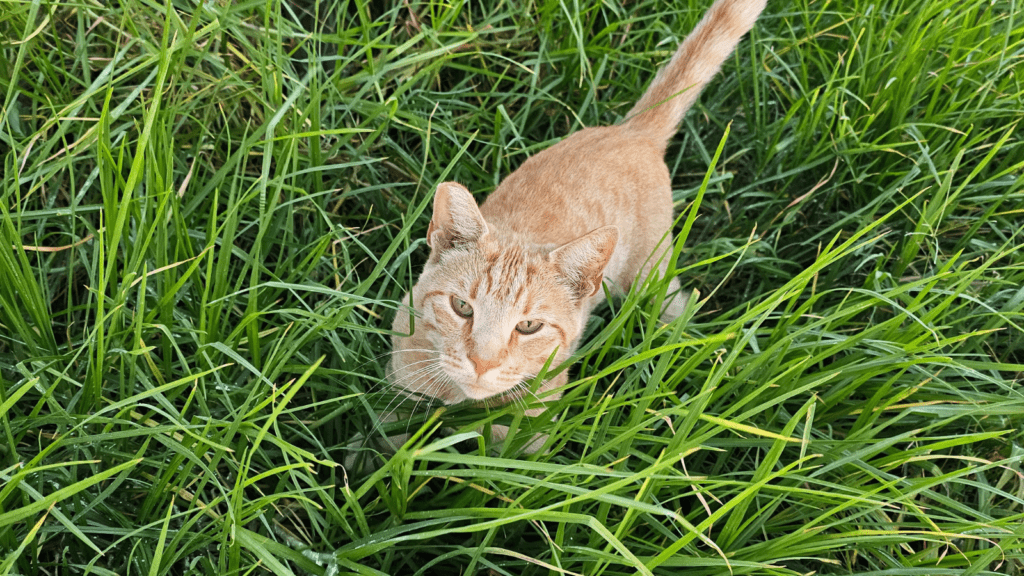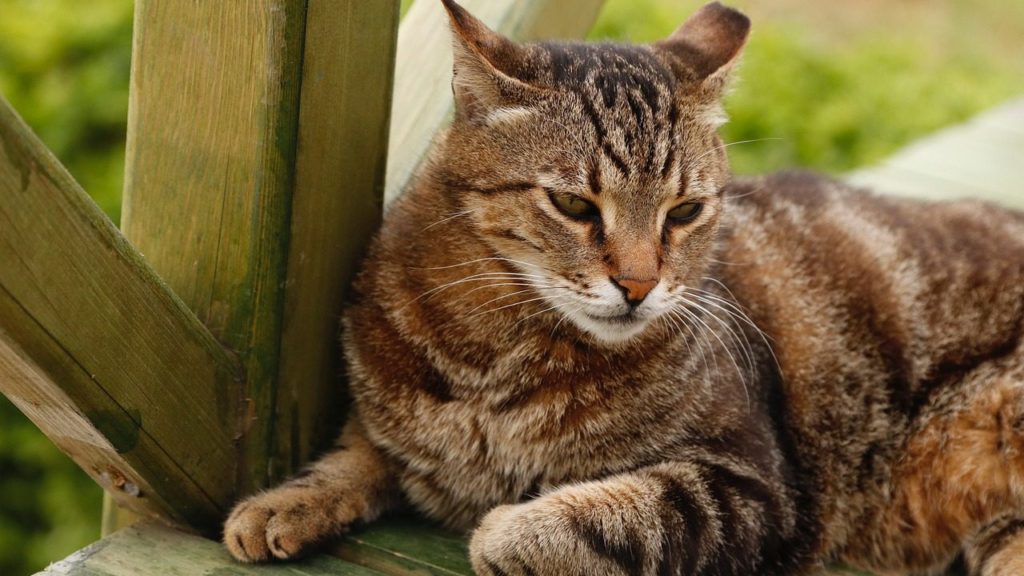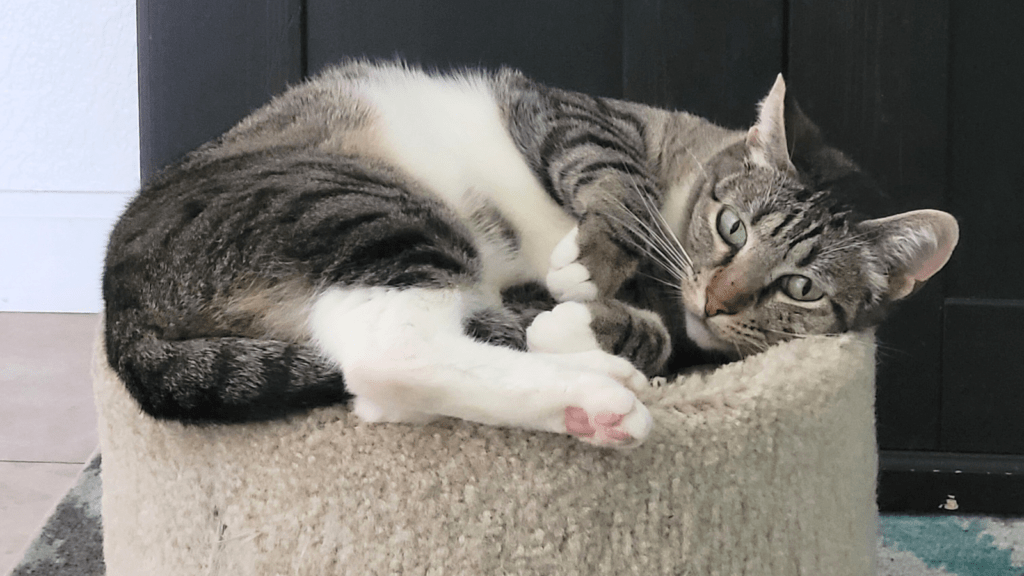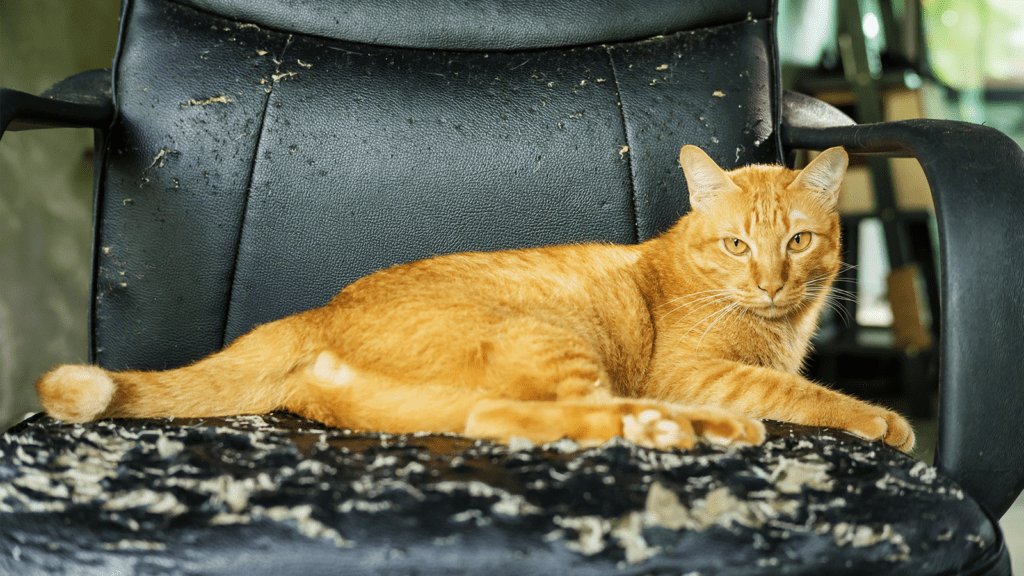
How To Stop Your Cat From Scratching Things
The cat is scratching up the sofa again! How do we stop them from scratching things?
The best way to stop cats from scratching is to provide plenty of enrichment, including scratching posts and toys. Use positive reinforcement to train your cat to scratch their scratchers rather than your furniture or other items. Avoid scent deterrents and punishments, and never declaw your cat, as this can cause lifelong health problems.
In this article, we’ll go through everything you need to know to stop your cat from scratching your furniture and to provide them with the enrichment they need to stay happy and healthy.
Why Does My Cat Scratch Everything?
Cats scratch for a variety of reasons, but primarily because it’s an instinctive impulse. This means you can’t expect a cat not to scratch!
Scratching is beneficial to cats in many ways, including:
- Scratching provides enrichment for cats by working their brains and bodies.
- It flexes, stretches, and works a cat’s muscles to keep them in shape. Cats love a good stretch, and using corrugated cardboard or a scratching post helps them exercise and stretch out.
- Cats have scent glands on their paw pads that release pheromones when they scratch, so it’s a way for them to mark territory for other cats. Remember, marking territory isn’t bad! It’s actually essential for a cat to feel comfortable and at home.
- Scratching helps to relieve stress in cats. You might notice your cat running off to scratch after being told no, for instance, or after bickering with other cats.
How To Stop Cats From Scratching Furniture
Although scratching is instinctual and essential for cats, most humans don’t like their things destroyed, especially brand new furniture or a new sofa. Left unchecked, your cat can scratch up your furniture, your carpet, and your curtains, leaving your house in shreds!
Luckily, there’s a way to manage where our cats scratch to minimize damage and ruined furniture. However, if you’re adopting a kitten, you should expect and plan for inappropriate scratching until your cat is trained. It’s similar to the puppy teething period, where they chew your favorite shoes!
Trim Your Cat’s Nails Regularly
Animals love to scratch when they have sharp claws. Scratching is also a way to keep their claws sharp, which can make the situation worse. The best way to minimize damage and prevent cats from scratching is to keep your cat’s claws trimmed and short. You can do this by trimming their nails monthly or every few weeks. If you notice the nails getting sharper, giving them a quick trim in between is fine, too!
I recommend taking some time to get to know your pet’s paws before trimming their nails for the first time. Here are some tips for trimming your cat’s nails.
Initially, cut only the tip of your cat’s claw. This will help you to avoid the quick completely. As you gain more experience and confidence, you can cut them even shorter.
In black cats, the quick can be more difficult to see. It may look like a dark spot near the base of the claw rather than being a more distinguishable pink.
Here are some extra tips for your cat’s manicure:
- Use sharp, clean nail trimmers. Dull clippers can cause splintering of the nail, whereas you want a clean cut to avoid hurting your cat.
- Trim quickly. This is just another way of ensuring the cut is clean.
- You don’t have to trim all the claws at once. Sometimes, it’s better to trim one or two nails then give yourself and your cat a break.
- Nail caps are a humane way of blunting your cat’s nails as a last resort. I recommend them as a management strategy until you can get your cat trained rather than a replacement for the enrichment and training we’ll discuss in this article.
Provide Plenty of Scratching Options
If you don’t have a scratching post or a dedicated scratching surface for your cat, don’t blame them for scratching your furniture! As we discussed above, scratching is perfectly natural for cats.
What a lot of people don’t know is that even one scratcher isn’t enough for many felines. Having a variety of scratchers will help improve your cat’s scratching habits by rewarding good scratch marks, which also deposit their smell onto the surface.
Here are some things to consider when it comes to cat scratchers:
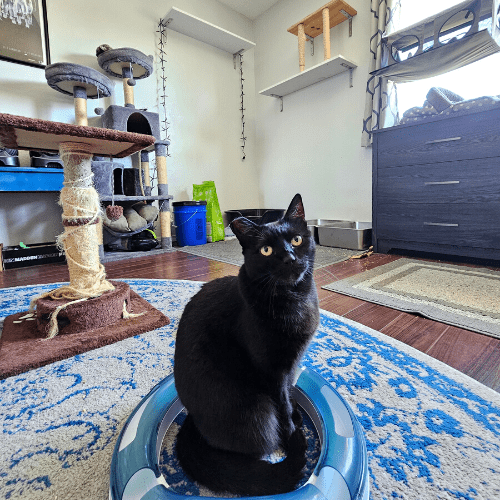
- Vertical, horizontal, and angled
- Material, corrugated cardboard is better than regular cardboard
- Height and length, tall enough for your cat to stretch, 3 feet tall
- Stability, sturdy for the cat to use with their full weight
Vertical Scratching Posts Vs. Horizontal Scratching Surfaces
The first thing I recommend for cat owners is to look at vertical and horizontal scratchers. Most cats prefer one over the other, though most will scratch horizontally if that’s all they have. Here are some of our favorite cat scratchers.
It should be easy to find out your cat’s preference just by watching them. Vertical scratchers will favor the side of your couch or curtains, while horizontal scratchers will favor the carpet or the arms of your chair.
You should have at least one of each type of scratcher in your home. Ideally, you’ll have two or more scratchers per cat for several reasons and meet their preferences.
These don’t have to be fancy. Cats love scratching cardboard boxes, cat trees with multiple scratching posts, and square carpet samples.
Material
Providing a variety of materials can also help your cats develop preferences and help you figure out what attracts them most. The most common materials are cardboard, sisal rope, and carpet.
Cardboard is the cheapest and pretty normal to use, but it also shreds easily. You’ll be picking up cardboard pieces from your floor regularly and replacing the scratchers often. Some cats love them because of that mess factor, though!
Sisal rope is more durable and tough to claw. It’s great for young cats, but older cats with joint issues might not favor it. It does hold up much longer than cardboard!

Carpet is a somewhat controversial choice. Some people think it’s great because it replicates what their cats already love to claw! Others find that their cats seem to be confused by the rules when they’re allowed to scratch some carpet, but not all carpet in the house.
It’s easier to scratch through than sisal rope but lasts longer than cardboard.
Height And Length
The areas most cat scratchers fail are height and length. Unfortunately, many products on the market aren’t actually suitable for a full-grown cat.
Your cat’s scratchers should either be the height of your cat when they stand on their hind legs with their front legs fully extended upwards or the length of your cat when sitting or standing with their front legs outstretched fully in front of them.
If it’s smaller, your cat isn’t able to fully stretch its body, which is one of the main reasons they scratch furniture. Therefore, they might move to scratch the back of your couch instead because it’s tall enough for them to stretch while scratching.
Stability
Lastly, scratchers need to be stable and sturdy! Many vertical posts don’t meet this requirement and wobble when your cat scratches them. This can make your cat think the post is going to fall on them, and they don’t want that!
Your pet would rather scratch the curtains that are securely hooked to the wall or your couch that doesn’t sway beneath their claws.
Secure Your Scratching Posts
On that note, it’s important to secure your current scratching posts. Most of them will come with hardware to attach to the wall, and this is super important! It will stop the scratcher from falling over and hurting your cat.
If you don’t want to drill into the walls, try purchasing cat trees with large bases. These are less likely to tip over.
You can also place heavy items on the base of the cat tree for extra security and place your scratcher in a corner so it’s supported by two walls rather than one. I wouldn’t recommend double-sided sticky tape, which likely wouldn’t be strong enough.
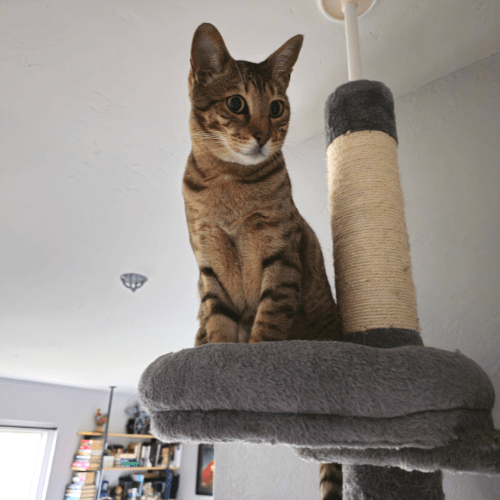
Provide Other Enrichment
If your cat is feeling bored, they’re bound to misbehave. They might even scratch where they know they’re not supposed to in order to get your attention. It’s like them saying, “Hey, I need something from you!”
On top of scratching posts, make sure your cat has the following:
- Daily playtime with you for at least 30-45 minutes, broken into 10-15 minute sessions throughout the day.
- Toys to play with when you’re busy, such as a fishing rod toy, stuffed catnip toys, springs, or bell toys.
- Window perches to look outside, bask in the sun, and birdwatch.
- Places to climb, jump, and hide.
Reinforce Appropriate Scratching
Positive reinforcement goes a long way when it comes to training a cat! Make your cat’s scratchers appealing by:
- Providing a variety of scratchers and a really good scratching post.
- Securing them so that they don’t wobble.
- Adding catnip to entice your cat to scratch.
- Place the scratchers in your cat’s favorite areas, such as right by the couch they like to scratch. (You can gradually move them later if you don’t like the placement, but scratchers should always be in places your cat likes to hang out. Otherwise, they won’t be used!)
Also, provide praise and treats when your cat scratches where they’re supposed to! This tells them what your expectations are, rather than making them think you get angry every time they scratch.
It takes an unrealistic expectation (no scratching ever) and makes it achievable for your cat (scratching only in the right places).
Make Furniture and Carpeting Unpleasant to Scratch
Once you have your scratchers all set up, it’s time to tell your cat “no.” But if you’ve ever had a cat, you know that it isn’t that simple! That’s why we’re going to make it their idea.
Do this by making furniture, carpet, or other items unpleasant to scratch. This will naturally deter your cat, and they’ll steer toward the more pleasant scratchers you’ve provided.
- Use textures cats hate, like double-sided tape or tin foil, or aluminum foil.
- Automated deterrents can blast air at your cat or squirt them as a deterrent.
- Avoid scent deterrents, as these are often harmful to the cat (particularly citrus and peppermint)
Declawing Hurts A Cat For Life
Desperate to stop their cats from scratching, some people turn to declawing. However, this is not a humane solution.
Declawing doesn’t only remove a cat’s nail but also the first digit of every toe of their paws. It’s a painful and unnecessary surgery, and for this reason, it is illegal in many countries. Unfortunately, the United States isn’t one of them.
You should know that cats face long-term harm from declawing.
They aren’t able to scratch and receive all of the social, mental, and physical benefits from it. They also aren’t able to walk the same, causing joint pain and arthritis. There’s also the possibility of infection, nerve damage, and bone spurs.
Humans can also face consequences after declawing their cat. Many cats feel pain when covering their potty in the litterbox, then associate that pain with the litterbox for the rest of their lives—meaning, they aren’t going to use it anymore!
Declawed cats are also more likely to bite in self-defense because they don’t have claws.
Why Punishing Cat Scratching Doesn’t Work
You might have been taught to sit ready and waiting with a spray bottle, squirting your pet every time they misbehave. Or maybe you’ve tried scolding them for their scratching.
You’ve likely also noticed that these methods don’t work very well. There are multiple reasons for this:
- The animal associates the punishments with you—damaging your relationship and causing fear.
- Because your cat associates you with the punishments and not their misbehavior, they will continue to misbehave when you’re not around.
So, you might be able to get your cat to stop scratching in front of you using these methods. But when you’re sleeping, working, or just out of the room, they’re likely to continue scratching as they please.
Cats have no concept of why scratching things in the house is bad, so we can’t use logic to stop them! Positive reinforcement, patience, and love are the key to getting your cat to stop scratching things you don’t want them to.

